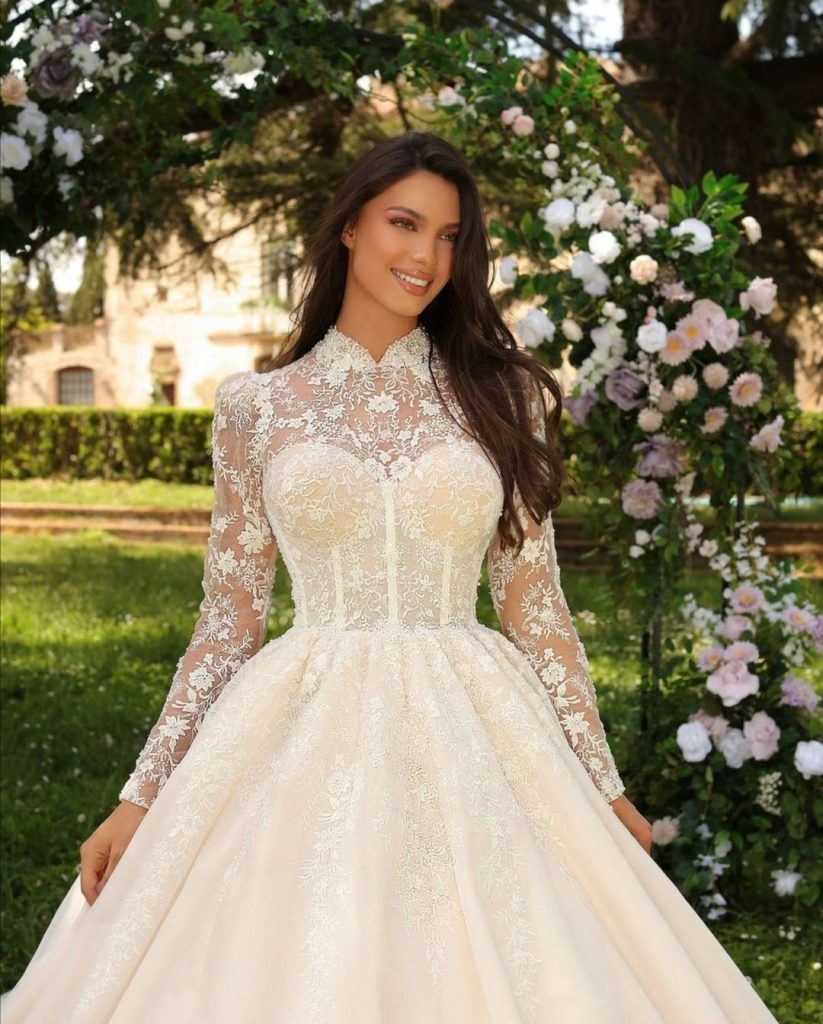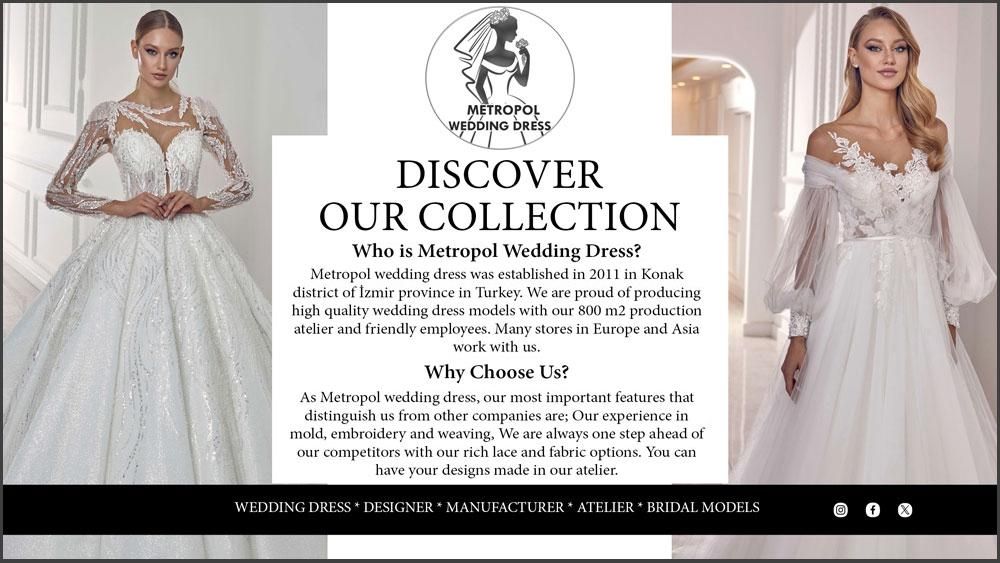
USA Customs Rules for Importing Wedding Dresses from Turkey 2025 In the ever-evolving world of international trade, importing wedding dresses from Turkey to the United States stands out as a lucrative opportunity for bridal retailers, wholesalers, and fashion entrepreneurs. As of 2025, Turkey continues to solidify its position as a global powerhouse in the apparel industry, particularly for high-quality, intricately designed wedding gowns that blend timeless elegance with modern flair. With exports reaching over $3.7 million in wedding gowns alone in the previous year—a 35.7% increase year-over-year—the demand for Turkish bridal wear in the US market is undeniable. But navigating the USA customs rules for importing wedding dresses from Turkey 2025 requires a deep understanding of tariffs, documentation, compliance standards, and logistical hurdles. This comprehensive guide, optimized for importers seeking clarity on “USA Customs Rules for Importing Wedding Dresses from Turkey 2025,” breaks down every aspect step by step. Whether you’re a seasoned importer or just starting out, we’ll equip you with the knowledge to streamline your process, minimize costs, and ensure seamless entry at US ports.
Why focus on 2025? Recent policy shifts, including the universal 10% reciprocal tariff introduced in April 2025, have reshaped the landscape for apparel imports. While Turkey benefits from relatively favorable rates compared to competitors like China (facing up to 34% duties), understanding these changes is crucial. From Harmonized Tariff Schedule (HTS) classifications to labeling requirements enforced by the Federal Trade Commission (FTC) and Consumer Product Safety Commission (CPSC), we’ll cover it all.
The Allure of Turkish Wedding Dresses: Why Import from Turkey in 2025?
Turkey’s wedding dress industry isn’t just thriving—it’s revolutionizing bridal fashion. Nestled at the crossroads of Europe and Asia, Turkish manufacturers draw from centuries-old textile traditions, Ottoman silk weaving, and contemporary design innovations to produce gowns that captivate brides worldwide. In 2025, with global bridal market projections exceeding $80 billion, Turkey’s export prowess positions it as an ideal sourcing hub for US importers.
Historical Roots and Modern Mastery
Turkey’s textile heritage dates back to the Byzantine era, but its modern bridal sector exploded in the 1990s with the establishment of clusters in Istanbul, Izmir, and Bursa. Today, over 500 manufacturers specialize in wedding dresses, exporting to more than 100 countries. The Istanbul Wedding Dress Manufacturers and Exporters Association reports that in the first five months of 2024, Turkey shipped over 11,800 gowns, with the US ranking fourth among destinations at 1,300 units. By 2025, this number is expected to surge, driven by Turkey’s competitive edge: skilled artisans, ethical labor practices, and prices 30-50% lower than Italian or French alternatives.
- Quality Craftsmanship: Turkish gowns feature hand-embroidered lace, Swarovski crystal embellishments, and sustainable fabrics like organic silk—meeting the rising demand for eco-friendly bridal wear.
- Customization Capabilities: Factories like Metropol Wedding Dress and Evrim Bridal offer bespoke designs, with turnaround times as short as 4-6 weeks.
- Diverse Styles: From bohemian A-line silhouettes to glamorous mermaid cuts, Turkish collections cater to multicultural US brides, including plus-size and hijab-friendly options.
Economic Incentives in 2025
The US-Turkey trade relationship, bolstered by the Generalized System of Preferences (GSP)—though expired in 2020 and under review for renewal in 2025—still offers low baseline duties for apparel. Coupled with the April 2025 reciprocal tariff pause, which equalizes rates at 10% for most nations (excluding China), Turkey emerges as a cost-effective alternative. Importers can expect total landed costs (including duties) to hover around 15-20% of invoice value, far below the 30-40% from Asian sources.
Market data underscores the potential: US bridal imports totaled $2.5 billion in 2024, with Turkey capturing 8% share—a 20% YoY growth. Retailers like David’s Bridal and Kleinfeld have increasingly sourced from Turkish suppliers, citing superior fit and durability.
Navigating USA Customs Rules for Importing Wedding Dresses from Turkey 2025: Key Regulations
US Customs and Border Protection (CBP) oversees all imports, treating wedding dresses as textiles under Chapters 61 and 62 of the Harmonized Tariff Schedule (HTS). In 2025, heightened scrutiny on apparel due to the Textiles Priority Trade Issue (PTI) means rigorous enforcement of origin rules, quotas, and safety standards. Failure to comply can result in delays, seizures, or penalties up to 300% of the shipment value.
1. Tariff Classifications and Duty Rates
The cornerstone of USA customs rules for importing wedding dresses from Turkey 2025 is accurate HTS classification. Wedding dresses typically fall under:
- HTS 6204.49.1060: Women’s or girls’ dresses, not knitted, of synthetic fibers (e.g., polyester tulle gowns)—base duty 27.9%, plus 10% reciprocal tariff.
- HTS 6204.19.3060: Of other textile materials (e.g., silk or cotton blends)—16% base + 10%.
- HTS 6204.43.00: Of man-made fibers, embroidered—27.7% + 10%.
Under the 2025 reciprocal tariffs, effective April 5, all Turkish apparel incurs an additional 10% ad valorem duty, but goods in transit before that date are exempt. No free trade agreement exists between the US and Turkey, so GSP renewal could reduce rates to 0% for qualifying items—monitor USTR updates.
| HTS Code | Description | Base Duty (2025) | + Reciprocal Tariff | Total Estimated Duty |
|---|---|---|---|---|
| 6204.49.1060 | Synthetic fiber dresses | 27.9% | 10% | 37.9% |
| 6204.19.3060 | Other textile dresses | 16% | 10% | 26% |
| 6204.43.00 | Embroidered man-made | 27.7% | 10% | 37.7% |
Note: Duties calculated on CIF value. Use CBP’s online estimator for precision.
Pro tip: Engage a customs broker early to secure a binding ruling from CBP, avoiding reclassification penalties.
2. Rules of Origin and Preferential Treatment
CBP enforces strict “yarn-forward” rules for textiles: the yarn, fabric, and assembly must originate in the US, Turkey, or NAFTA/USMCA countries for preferential rates. Turkish gowns often qualify if fabrics are woven locally, but blended imports (e.g., Italian lace) require a Certificate of Origin proving substantial transformation.
In 2025, the USMCA’s Tariff Preference Levels (TPLs) allow up to 15 million square meter equivalents of non-originating apparel duty-free, benefiting Turkish-US hybrids. Document with a NAFTA Certificate or USMCA Certification of Origin.
3. Labeling and Marking Requirements
All imported wedding dresses must bear permanent labels in English, per FTC’s Textile Fiber Products Identification Act:
- Fiber content (e.g., “100% Polyester”).
- Country of origin (“Made in Turkey”).
- Manufacturer’s name or RN (Registered Identification Number).
- Care instructions (e.g., “Dry Clean Only”).
CBP inspects 20% of apparel shipments for compliance; non-conforming labels trigger redelivery or destruction. For 2025, enhanced ELVS (Entry and Local Value Summary) rules mandate digital labeling data submission pre-arrival.
4. Safety and Quality Standards
The CPSC regulates flammability under the Flammable Fabrics Act—wedding dresses with tulle or chiffon must pass 16 CFR 1610 tests. No lead or phthalates in trims, per CPSIA. Turkish exporters often provide third-party certifications (e.g., OEKO-TEX), but US importers bear liability.
EPA oversight applies to chemical dyes; ensure no restricted azo compounds. In 2025, new CBI (Caribbean Basin Initiative) alignments indirectly affect Turkish supply chains via regional fabrics.
5. Quotas and Enforcement
No absolute quotas on Turkish wedding dresses, but visa requirements under Multi-Fiber Arrangement remnants monitor surges. CBP’s PTI teams conduct factory verifications in Turkey to combat transshipment fraud. Report suspicions via e-Allegations portal.

Step-by-Step Process: How to Import Wedding Dresses from Turkey to the US in 2025
Importing isn’t a one-size-fits-all affair, but following this blueprint ensures compliance with USA customs rules for importing wedding dresses from Turkey 2025.
Step 1: Obtain an Importer Number and Select Partners
- Get Your Importer of Record (IOR) Number: Apply via CBP’s ACE portal—free and instant for businesses.
- Source Manufacturers: Platforms like Istanbul Fashion Center or TurkishExporter list vetted suppliers (e.g., Thesma Fashion Design, Nellie Bridal). Visit trade shows like IF Wedding Fashion Izmir for networking.
- Hire a Customs Broker: Essential for HTS classification and filings. Firms like USA Customs Clearance specialize in apparel.
Step 2: Place Orders and Ensure Compliance
- Negotiate contracts specifying Incoterms (e.g., FOB Istanbul for cost control).
- Request samples with full documentation: Commercial Invoice, Packing List, Certificate of Origin.
- Verify GSP eligibility if renewed—reduces duties to 0%.
Budget for MOQs: 50-100 pieces per style, with wholesale prices $200-800 per gown.
Step 3: Arrange Shipping and Logistics
- Choose Freight Forwarder: DHL or Maersk for air/sea; expect $0.50-$1.50/kg air freight from Istanbul to New York.
- File Importer Security Filing (ISF): For ocean shipments >$10,000, submit 24 hours pre-loading.
- Insurance: Cover 110% of value against damage—Turkish gowns’ delicate beads warrant full protection.
Transit time: 7-10 days air, 25-35 days sea.
Step 4: Prepare Documentation
Core docs for USA customs rules for importing wedding dresses from Turkey 2025:
- Commercial Invoice: Details value, HTS, origin.
- Bill of Lading/Air Waybill: Proof of shipment.
- Certificate of Origin: For duty preferences.
- Packing List: Itemized contents.
- FDA/CPSC Certs: If applicable for trims.
- Entry Summary (CBP Form 7501): Filed electronically via broker.
Digital submission via ACE is mandatory in 2025.
Step 5: Customs Clearance and Payment
- Entry Types: Informal (<$2,500) or Formal (> $2,500)—most wedding imports are formal.
- Pay Duties: Via ACH; expect MPF (0.3464% min $31.67) + harbor fees.
- Inspection: CBP may exam 5-10% of shipments; prepare for holds.
Post-clearance, transport to warehouse—factor 1-2 weeks total.
Step 6: Post-Import Compliance and Sales
- Affix US labels if not pre-applied.
- Track inventory with RFID for traceability.
- Market as “Authentic Turkish Bridal” to leverage origin appeal.
Top Turkish Wedding Dress Manufacturers and Exporters for 2025
Sourcing the right partner is pivotal. Here’s a curated list based on 2025 export data:
- Metropol Wedding Dress (Istanbul): Specializes in custom mermaid and A-line gowns; $300-1,200 wholesale. Exports 20% to US.
- Evrim Bridal (Izmir): Handmade lace experts; eco-friendly lines. MOQ 50; ships via DHL.
- Istanbul Fashion Center: Wholesale hub with 2025 collections; 100+ styles, $150-600.
- Thesma Fashion Design: Haute couture focus; US-compliant labeling. Annual US exports: 5,000 units.
- Sara Moda Evi: Affordable plus-size options; GSP-ready docs.
| Manufacturer | Specialty | Price Range (USD) | US Export Share | MOQ |
|---|---|---|---|---|
| Metropol | Custom Mermaid | 300-1200 | 20% | 50 |
| Evrim Bridal | Lace Eco | 250-900 | 15% | 40 |
| Istanbul Fashion | Bulk A-Line | 150-600 | 25% | 100 |
| Thesma | Haute Couture | 400-1500 | 18% | 30 |
| Sara Moda | Plus-Size | 200-700 | 12% | 60 |
Contact via TurkishExporter.com for quotes.
Cost Breakdown: Budgeting for Your 2025 Import
For a sample shipment of 100 gowns ($50,000 CIF value):
- Product Cost: $30,000 (60%)
- Shipping: $5,000 (10%)
- Duties (26% avg.): $13,000 (26%)
- Fees (MPF, Broker): $1,200 (2.4%)
- Insurance/Labels: $800 (1.6%)
- Total Landed: $50,000
ROI potential: Retail at $1,500/gown = $150,000 revenue; 66% margin post-costs.
Tools like EasyShip’s calculator help simulate.
Challenges and Solutions in 2025
- Tariff Volatility: Monitor USTR for GSP renewal; diversify to USMCA countries.
- Supply Chain Delays: Turkish strikes or Red Sea disruptions—opt for air freight.
- Currency Fluctuations: Lira volatility; lock USD prices.
- IP Risks: Ensure designs aren’t knockoffs; use NDAs.
Solutions: Partner with brokers for real-time alerts; audit suppliers annually.
Future Outlook: Trends Shaping USA Customs Rules for Importing Wedding Dresses from Turkey 2025
As sustainability surges, Turkish manufacturers lead with recycled tulle and ethical sourcing—aligning with US green import incentives. Digital twins and AI design tools promise faster customs via predictive compliance. With Turkey’s EU Customs Union enhancing origin credibility, 2025 imports could hit $5 million.
Conclusion: Your Path to Profitable Turkish Bridal Imports
Mastering USA customs rules for importing wedding dresses from Turkey 2025 unlocks a treasure trove of elegant, affordable gowns ready to grace US altars. From HTS codes to CPSC certs, compliance is key—but with the right partners and preparation, it’s achievable. Start by connecting with a broker today, source from top exporters like Metropol, and watch your bridal business bloom. For personalized advice, consult CBP resources or experts at USA Customs Clearance. Happy importing!

Importing Clothes from Turkey: A Comprehensive Guide to Wedding Dresses, Shipping Safety, Travel Tips, and Global Bridal Trends in 2025
In the dynamic landscape of international fashion and trade, importing clothes from Turkey has emerged as a savvy choice for retailers, brides, and fashion enthusiasts alike. As of 2025, Turkey’s textile industry continues to thrive, exporting over $16 billion in apparel annually, with wedding dresses and evening gowns leading the charge due to their exquisite craftsmanship and affordability. But questions abound: Can you import clothes from Turkey without hassle? Is it safe to ship a wedding dress across borders? How do you fly internationally with a wedding dress without creasing that delicate lace? Which country has the best wedding gowns for your dream silhouette? Do you have to pay import tax from Turkey, and why are clothes in Turkey so irresistibly cheap? What is the best thing to import from Turkey to maximize profits? Which dress is not allowed in flight, and can you FedEx a wedding dress with confidence? Finally, how heavy is a wedding dress to ship, and what does that mean for your budget?
Can You Import Clothes from Turkey? Essential Rules and Processes for 2025
Yes, importing clothes from Turkey is not only possible but highly advantageous, especially for apparel like wedding dresses that demand quality and quick turnaround. Turkey’s position as Europe’s textile powerhouse—producing everything from chiffon gowns to embroidered veils—makes it a top sourcing destination for US and EU markets. In 2025, with the US Generalized System of Preferences (GSP) under review for renewal, over 3,500 Turkish products, including many apparel items, could enter duty-free, slashing costs for importers.
Key USA Import Rules for Clothes from Turkey
US Customs and Border Protection (CBP) regulates all apparel imports under Chapters 61-63 of the Harmonized Tariff Schedule (HTS). For clothes from Turkey, expect:
- HTS Classification: Casual wear (e.g., HTS 6204.49) incurs 16-27% base duties; bridal gowns often fall under 6204.19 at 16%.
- 2025 Reciprocal Tariffs: A universal 10% ad valorem duty applies to all Turkish imports post-April 5, but in-transit goods are exempt—plan shipments accordingly. Turkey’s baseline rate remains competitive versus China’s 34%.
- Rules of Origin: “Yarn-forward” requirements mean fabrics must originate in Turkey or USMCA countries for preferences; certificates are mandatory.
- Labeling and Safety: FTC mandates English fiber content, origin (“Made in Turkey”), and care labels. CPSC enforces flammability tests for synthetics like tulle.
For shipments under $2,500, informal entry suffices; over that or commercial textiles require formal entry with a bond. No quotas apply to Turkish apparel, but PTI inspections target transshipment fraud.
Step-by-Step Import Process
- Obtain Importer Number: Free via CBP’s ACE portal.
- Source Suppliers: Platforms like TurkishExporter.com connect to Istanbul’s Merter district factories.
- Documentation: Commercial invoice, packing list, bill of lading, and origin certificate.
- Hire a Broker: Firms like USA Customs Clearance handle HTS and filings for $100-300.
- Shipping: Sea (25-35 days, $0.50/kg) or air (7-10 days, $1.50/kg) via Maersk or DHL.
Pro Tip: For wedding dresses, request OEKO-TEX certification to assure eco-friendly dyes. Importers report 20-30% savings versus Asian sources, with 2025 GSP renewal potentially dropping duties to 0%.
| Requirement | Details for Turkish Clothes | Potential Cost (2025) |
|---|---|---|
| HTS Duty | 16-27% base + 10% reciprocal | $1,600-2,700 per $10K shipment |
| MPF Fee | 0.3464% (min $31.67) | $35-50 |
| Labeling | English fiber/origin | $0.50-1 per garment |
| Broker Fee | HTS/filing | $150-300 |
Is It Safe to Ship a Wedding Dress? Best Practices for International Protection
Absolutely, shipping a wedding dress is safe when done right—thousands arrive pristine annually via couriers like FedEx and DHL. Experts like Melissa Martel from PreOwnedWeddingDresses.com emphasize sturdy packaging over flimsy preservation boxes, which risk damage or theft.
Safety Factors and Risks
- Damage Prevention: Delicate elements like beading or tulle demand acid-free tissue and plastic bags to ward off moisture. International transit exposes gowns to humidity, so waterproof outer boxes are essential.
- Theft/ Loss: Insure for full value (average $1,000-5,000); FedEx’s signature requirement adds security.
- Customs Holds: For Turkey-to-US, declare as “personal apparel” to avoid duties under $800 de minimis.
In 2025, with Red Sea disruptions, air shipping via DHL (72-hour global delivery) minimizes risks over sea. Bridal shippers report 99% success rates with proper prep.
Step-by-Step Safe Shipping Guide
- Clean and Fold: Professional steaming; fold loosely in muslin, avoiding creases on trains.
- Inner Protection: Poly bag inside garment bag; tissue for embellishments.
- Box It Up: Sturdy 18x16x9-inch box ($10-20 from FedEx); fill voids with peanuts.
- Seal and Label: Tape seams; mark “Fragile: Wedding Gown” externally.
- Insure and Track: $100-500 coverage; opt for express (1-3 days domestic, 3-7 international).
For destination weddings, coordinate with venues for on-site steaming—$50-100 service. Avoid postal services for valuables; couriers like ParcelABC specialize in bridal.
How to Fly Internationally with a Wedding Dress: Airline Tips and Hacks
Flying internationally with a wedding dress? It’s doable and often preferable to shipping for control. Experts like Natasha Duff-Cole from Ladies of Lineage advise planning 48 hours ahead, as guidelines vary by carrier.
Airline-Specific Policies
- Delta: Counts as carry-on; closets available on international wide-bodies—request at gate.
- United: Garment bags as personal items; business class closets prioritized, but economy often accommodated.
- American: Soft-sided bags OK; early boarding secures overhead space.
- International (e.g., Turkish Airlines): Free extra garment bag; hang in cabin closets.
TSA allows dresses through security; expect wanding for metal beads. For 2025, post-pandemic, masks are optional but layers protect fabrics.
Pro Tips for Smooth Travel
- Pack Smart: Roll into a trifold garment bag (22x14x9 inches max); under-seat for small planes.
- Board Early: Priority seating ($10-50) ensures closet access.
- Wrinkle Defense: Hang post-flight; portable steamer ($20) for touch-ups.
- International Customs: Declare as personal; Turkey-US flights allow $800 duty-free.
Brides report zero issues on Delta’s transatlantic routes when flagged early. For Greece or Italy destinations, pair with a silk slip to minimize bulk.
Which Country Has the Best Wedding Gowns? Global Rankings and Turkish Edge in 2025
Determining the “best” wedding gowns is subjective, but 2025 rankings favor countries blending heritage, innovation, and accessibility. Italy tops for couture (e.g., Vera Wang’s Milan ateliers), France for lace (Chanel’s Versailles silks), and Spain for value (Pronovias’ $1,000-3,000 range). Yet, Turkey steals the spotlight as the best overall for 2025, per ELLE and Vogue, with 25% export growth to bridal markets.
Why Turkey Leads in 2025
- Craftsmanship: Ottoman embroidery and Bursa silks yield heirloom-quality at 30-50% less than Italy.
- Trends: Sustainable tulle and customizable A-lines align with eco-brides; Tarik Ediz gowns worn at Oscars.
- Versus Competitors: US (David’s Bridal) excels in mass-market ($500 avg.); India in saris ($200-1,000). Turkey’s $3.7M bridal exports edge out Spain’s volume.
| Country | Strengths | Avg. Price (2025) | Best For |
|---|---|---|---|
| Turkey | Affordable luxury, embroidery | $300-1,200 | Value seekers |
| Italy | Couture silhouettes | $2,000-10,000 | High-end |
| France | Delicate lace | $1,500-5,000 | Romantic |
| Spain | Versatile A-lines | $800-2,500 | Budget elegance |
| USA | Quick customization | $500-2,000 | Mass-market |
Turkish gowns, like Cengiz Aktürk’s hijab options, cater to diverse brides globally.
Do I Have to Pay Import Tax from Turkey? 2025 Duty Breakdown for Apparel
Yes, import taxes apply to clothes from Turkey, but 2025’s structure keeps them manageable—typically 26-38% total on CIF value. No US-Turkey FTA exists, so base duties plus reciprocal tariffs rule.
Tax Components
- MFN Duties: 16% for most apparel; embroidered gowns at 27%.
- Reciprocal Tariff: 10% universal from April 2025; Turkey at baseline.
- MPF/Harbor Fees: $31.67 min + 0.3464%.
- GSP Potential: Renewal could zero duties for qualifying items—monitor USTR.
For a $10,000 wedding dress shipment: $2,600 duties + $50 fees = $2,650 total. Use EasyShip’s calculator for precision. Brokers mitigate via origin proofs.
Why Are Clothes in Turkey So Cheap? Economic Insights for Importers
Clothes in Turkey dazzle with prices 20-50% below EU averages, thanks to lira depreciation, local production, and incentives. A Zara equivalent at LC Waikiki costs $20 vs. $40 abroad.
Key Reasons
- Currency Volatility: Lira’s 2025 weakness makes exports USD-cheap; raw materials cost pennies in foreign terms.
- Integrated Supply Chains: Bursa textiles feed Istanbul factories—zero import costs.
- Government Subsidies: Tax breaks and low-interest loans cut production 15-20%.
- Labor and Scale: Skilled artisans at $5-10/hour; 10,000+ ateliers drive competition.
Merter markets offer wholesale gowns at $150—half Italian prices—without quality compromise. Inflation hurts locals but boosts exporters.
What Is the Best Thing to Import from Turkey? Top Picks for 2025 Profits
Textiles top the list, but 2025’s stars include jewelry ($10B exports) and furniture ($8.4B). For apparel lovers, wedding dresses yield 50% margins.
Prime Imports
- Apparel/Wedding Gowns: $16.4B exports; eco-lace at $200-800 wholesale.
- Jewelry: Gold/silver at 20% below Italy; EU-compliant.
- Furniture: Modern designs $100-500; 30% EU growth.
- Carpets: Hand-knotted wool, $5B target.
- Nuts/Dried Fruits: Hazelnuts at $2/kg; health trend.
| Product | Export Value (2025 Est.) | Margin Potential | Best Market |
|---|---|---|---|
| Wedding Dresses | $3.7B | 40-60% | US/EU |
| Jewelry | $10B | 30-50% | Middle East |
| Furniture | $8.4B | 25-40% | UK |
| Carpets | $5B | 35% | USA |
| Apparel General | $16.4B | 20-40% | Global |
Diversify with perfumes ($1B niche).
Which Dress Is Not Allowed in Flight? Decoding Airline Restrictions
No specific “dress” is outright banned, but revealing or offensive attire can lead to denial. Airlines’ contracts prohibit “lewd/obscene” clothing—think bikini tops, Speedos, or profanity tees.
Common No-Gos
- Barefoot/Minimal Coverage: No bare torsos; tank tops OK if modest.
- Offensive Prints: F-bombs or hate symbols—e.g., 2019 Southwest ejection.
- Swimwear: Bikinis as outerwear on Hawaiian Airlines.
Enforcement is discretionary; crop tops sparked 2021 Alaska drama. For flights, opt for lounge-appropriate layers—$20 hoodies save headaches.
Can You FedEx a Wedding Dress? Guidelines for Seamless Delivery
Yes, FedEx excels at wedding dress shipping—fast, trackable, and insured up to $100 base (add $5-20 for full value). Their guidelines mirror UPS: sturdy boxes, no preservation flimsies.
FedEx-Specific Tips
- Packaging: 18x16x9-inch box; poly bag inside for moisture.
- Services: Priority Overnight (1-2 days, $50-150 domestic); International Economy (3-7 days, $100-300).
- Insurance: Covers loss/damage; declare $2,000 for a typical gown.
Drop at FedEx Office for pro-packing ($15-30). Users praise 98% on-time rates for bridal.
How Heavy Is a Wedding Dress to Ship? Weights, Costs, and Prep
The average wedding dress weighs 3-7 lbs (1.4-3.2 kg), but ball gowns with beading hit 10-15 lbs. Add 2-3 lbs for packaging.
Weight Breakdown
- Simple Sheath: 3-5 lbs (cotton/silk).
- A-Line/Mermaid: 5-8 lbs (tulle layers).
- Ball Gown: 8-15 lbs (embellishments).
Shipping: $50-100 domestic (FedEx, 5 lbs); $150-300 international (7 lbs). Weigh via scale: step on with/without dress.
Conclusion: Embrace Turkish Elegance in Your 2025 Bridal Journey
From importing clothes from Turkey’s vibrant markets to safely shipping or flying your gown, 2025 offers endless opportunities for bridal bliss. Turkey’s affordable, high-quality wedding dresses—untaxed under potential GSP—make it the best import bet, outshining global rivals in value. Sidestep flight dress pitfalls, FedEx with flair, and remember: at 5-7 lbs average, your dream dress travels lighter than worry. Source, ship, and sparkle—your happily ever after awaits.






